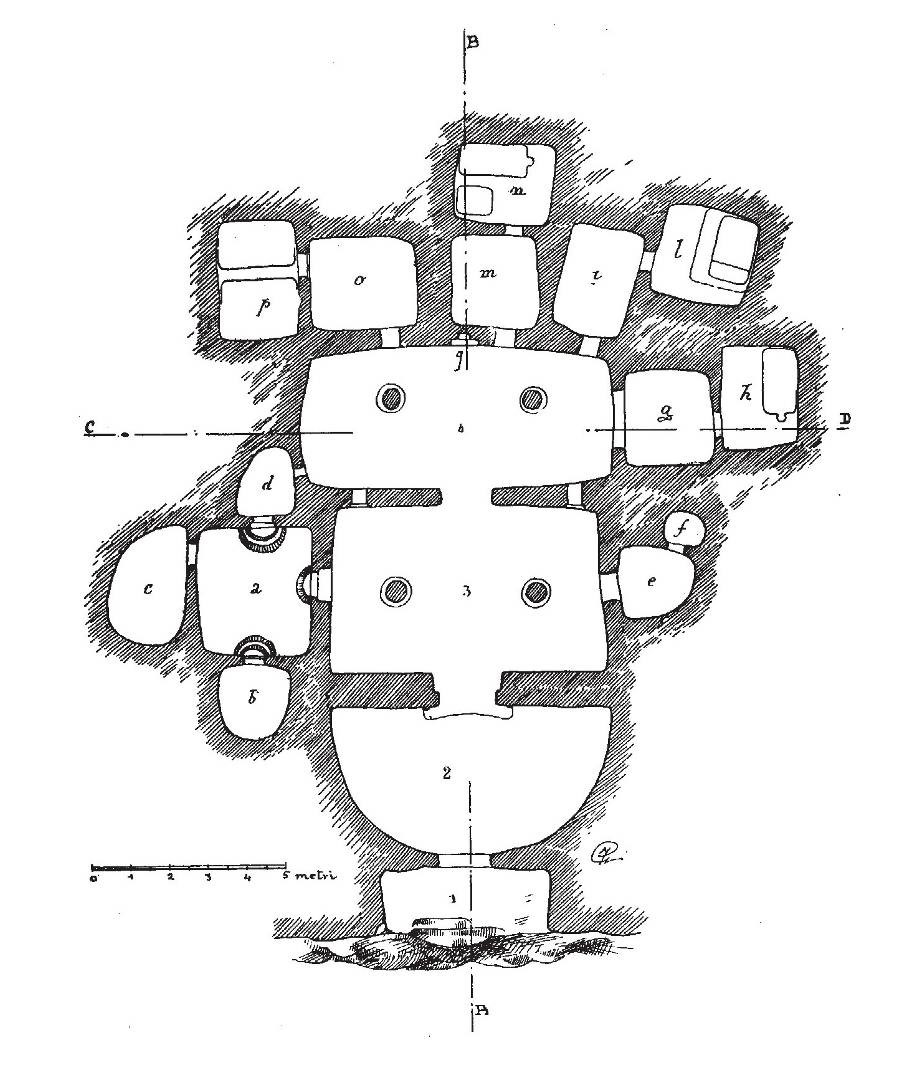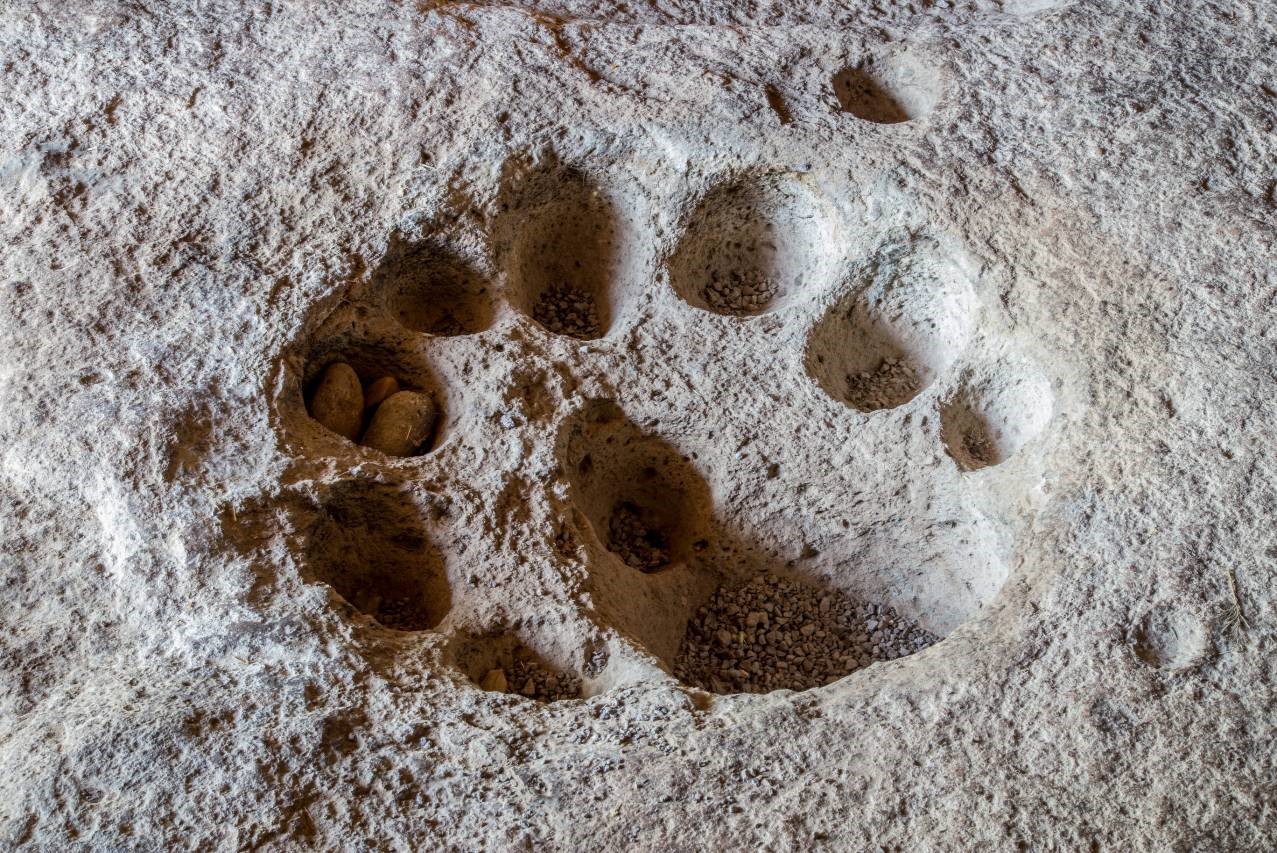The “tomba del Capo” (VI)
The most interesting domus de janas of the Sant’Andrea Priu hypogeum necropolis is the so-called “Tomba del Capo”, divided into eighteen rooms around a central area, which forms an almost labyrinth, with an overall size of 250 square metres.
The first three rooms (a-c) are the oldest, central area of the multi-cell tomb; the other rooms were added at later times (fig. 1).

From the rectangular atrium a, with its flat ceiling, access is given to the semi-circular ante-cell b (sizes: 7.10 m diameter x 4 m height).
The ceiling, sloping towards the entrance, copies the wooden beams that supported the roof in prehistoric huts (fig. 2).

The architectural details (decorated ceilings, relief work, lesenes, skirting) and the layout of the hypogeum provide useful indications for the reconstruction of the “house of the living” (fig. 3).

There is still residue of red paint under the line of the ceiling, presumably ochre, a pigment of intense symbolic value tied to the regeneration of the deceased and the colour of blood.
There are several hollows dug into the rock floor, in a circular shape, that were used for ritual libations in honour of the deceased (fig. 4).

The two main cells, aligned with each other, are both rectangular, with a flat ceiling supported by columns. Smaller cells are arranged around them, with straight and curved walls.
The tomb was constructed in the pre-Nuragic age (4th millennium - 3rd millennium B.C.). In Roman and High Medieval times, the tomb was transformed into a place of Christian worship with the name of the church of Sant’Andrea The change brought about renovation and re-adaptation work for the rooms and the decoration on the walls, with several Christian frescoes appearing.
Bibliografia
- BONINU A., SOLINAS M., La Necropoli di Sant’Andrea Priu. Bonorva, Mores 1999.
- CAPRARA R., La necropoli di S. Andrea Priu. Sardegna Archeologica. Guide e Itinerari, 3, Sassari 1986.
- CORNI F., La Sardegna Antica nei disegni di F. Corni, coll. Triangolo della Nurra, Pedimonte Matese, 2001.
- FOSCHI A., Bonorva. Loc. Sant’Andria Priu, in Anati E. (a cura di), I Sardi. La Sardegna dal Paleolitico all’Età Romana, Milano 1984, pp. 287-289.
- MELONI G. M., Le domus de janas del Logudoro-Mejologu, in L’ipogeismo nel Mediterraneo. Origini, sviluppo, quadri culturali, Atti del Congresso Internazionale, Sassari - Oristano 23 - 28 maggio 1994, II, Muros 2000, pp. 789 - 802.
- TANDA G., L’Arte delle domus de janas nelle immagini di Jngeborg Mangold, Sassari 1985, pp. 61-65.
- TARAMELLI A., Fortezze, Recinti, Fonti sacre e Necropoli preromane nell’Agro di Bonorva (Prov. di Sassari), con rilievi e disegni del Prof. Francesco Giarrizzo, in Monumenti Antichi dei Lincei, XXV, 1919, coll. 765-904.
- TARAMELLI A., Edizione archeologica della Carta d’Italia al 100.000, Foglio 193 Bonorva, quadrante II NE, Firenze 1940 (XVIII), pp. 48-49.
- USAI L., La necropoli di Sant’Andrea Priu a Bonorva, in Almanacco Gallurese, 2013-2014, Muros, pp. 40-47.

 VR
VR